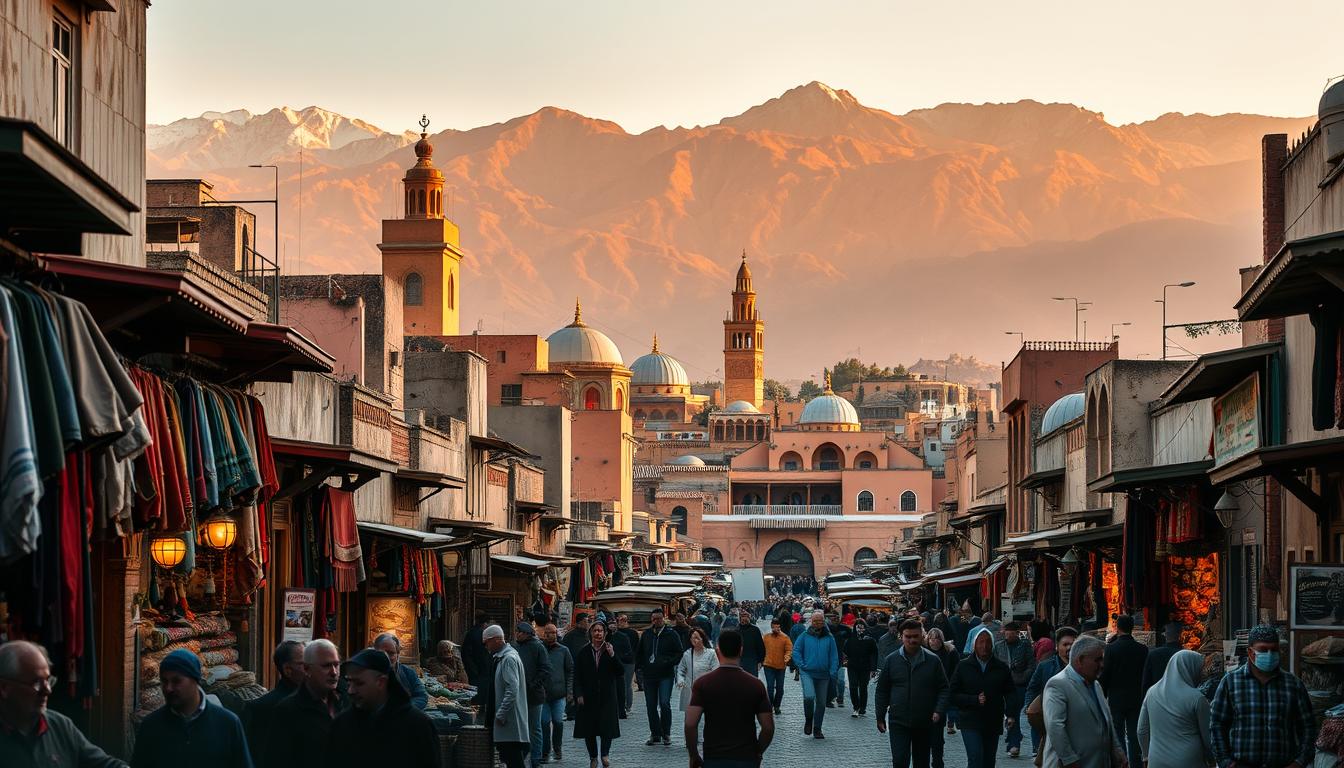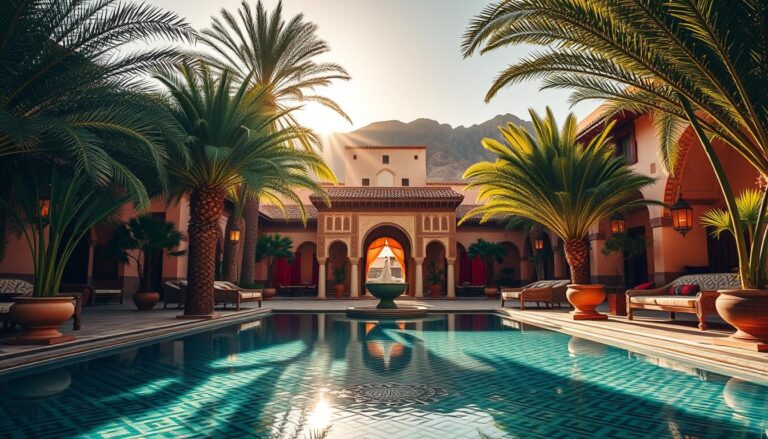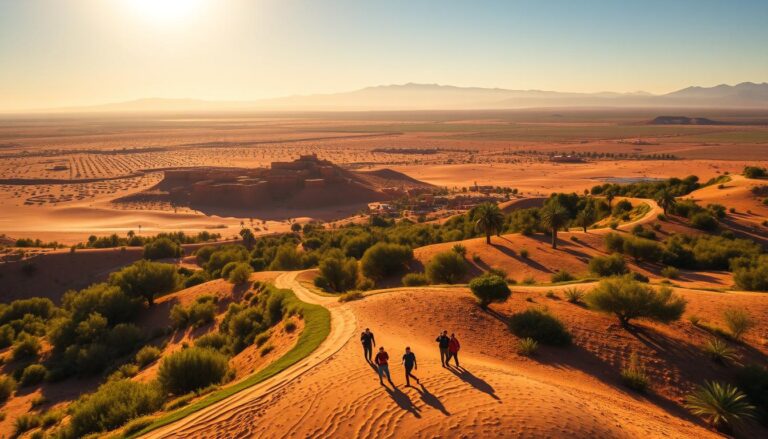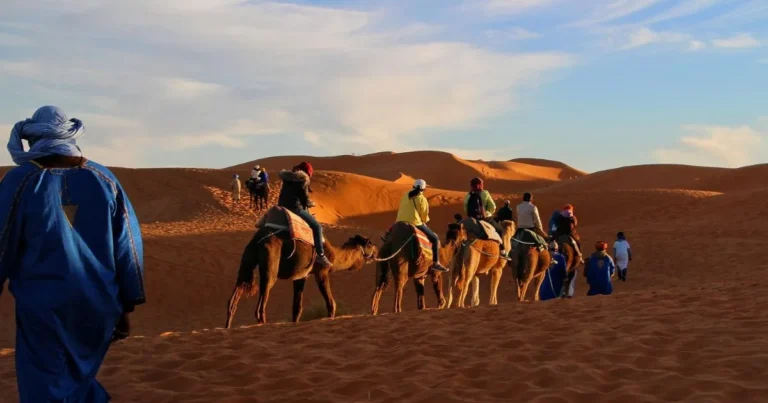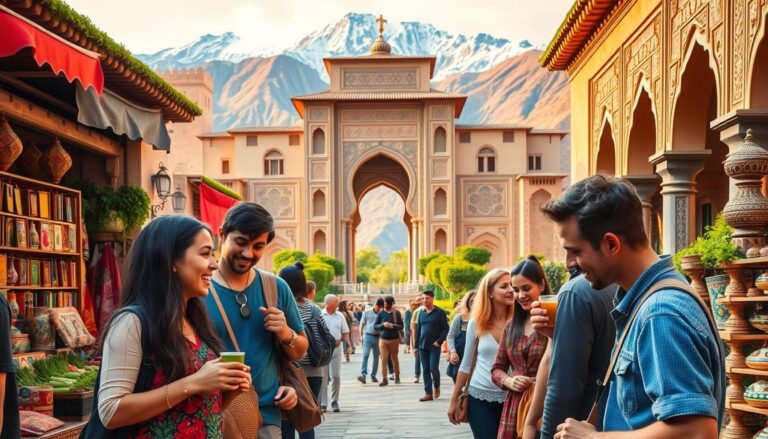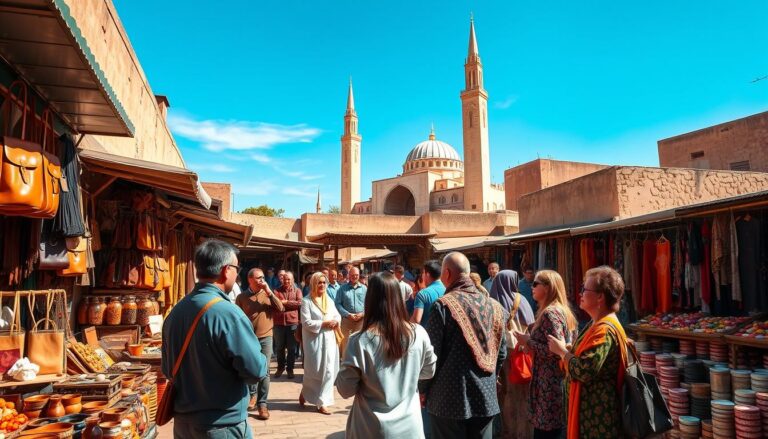What to Do in Fes Morocco: Ultimate Travel Guide
When I first arrived in Fes, I knew it would change my travel views. This ancient city is in Morocco’s heart. It offers a mix of history, culture, and sensory wonders that grabs every traveler’s heart.
In Fes Morocco, you find a place that goes beyond usual tourist spots. It’s the oldest imperial city in North Africa. Here, medieval streets tell old stories and lively traditions come to life.
Your journey to Fes’s best spots starts in a UNESCO World Heritage site. It’s kept its true self for over a thousand years. You’ll see amazing crafts and buildings that make your visit unforgettable.
This guide will show you Fes’s secrets. You’ll learn what to do in fes morocco, and to explore its medina, find hidden spots, and make lasting memories. Get ready to be captivated by a place that’s both old and full of life.
Table of Contents
Understanding Fes: Morocco’s Cultural Heart
Fes is a captivating place that shows the heart of Moroccan culture. This old city is full of history, with every street and building telling a story. It invites visitors to dive into its rich heritage and stunning architecture.
In the heart of Morocco, Fes takes you on a journey through time. Your tour of the fes medina will uncover the deep cultural meaning that has shaped this city for ages.
Historical Significance of Fes
Fes was founded in the 9th century and quickly became a key center of Islamic learning and culture. It was Morocco’s capital for many years, known for its intellectual and spiritual importance.
- Established in 789 AD by Idris I
- Became a major center of education
- Renowned for Islamic scholarship
The Three Distinctive Districts
Fes is made up of three unique districts, each with its own story:
| District | Characteristics | Historical Period |
|---|---|---|
| Fes el Bali | Medieval walled medina | 9th-14th century |
| Fes el Jdid | New medina with royal palace | 13th-15th century |
| Ville Nouvelle | Modern French-built district | 20th century |
UNESCO World Heritage Status
The medina of Fes was named a UNESCO World Heritage site in 1981. It’s celebrated for its well-preserved traditional urban design. Exploring this place will greatly enhance your Moroccan cultural experiences.
Walking through Fes feels like opening a history book. Every corner has a story of cultural wealth and historical depth.
Best Time to Visit and Weather Considerations
Planning a trip to Fes Morocco means thinking about the city’s climate and seasons. The best time to visit depends on what you like and how you handle different weather.
The shoulder seasons of March to May and September to November are the most comfortable. During these times, the weather is mild, making it perfect for exploring the city’s culture.
- Spring (March-May): Temperatures range from 55°F to 75°F
- Autumn (September-November): Temperatures range from 60°F to 80°F
- Summer (June-August): Temperatures can exceed 95°F
- Winter (December-February): Temperatures drop to 45°F-60°F
Summer can be tough in Fes Morocco, with very hot weather. Winter is cooler but still mild compared to other places.
| Season | Temperature Range | Travel Experience |
|---|---|---|
| Spring | 55°F – 75°F | Perfect for sightseeing and outdoor activities |
| Summer | 80°F – 95°F | Hot and challenging for extensive exploration |
| Autumn | 60°F – 80°F | Ideal for cultural experiences and walking tours |
| Winter | 45°F – 60°F | Cool but comfortable, fewer tourists |
For the best experience, visit during the shoulder seasons. These months offer great weather and fewer crowds, letting you dive into Fes’s magic.
Navigating the Medina of Fes
Exploring the Fes medina is an amazing adventure. But, it’s also one of the most complex places you’ll see. It’s the largest car-free area in the world, with a maze-like layout that’s hard to navigate.
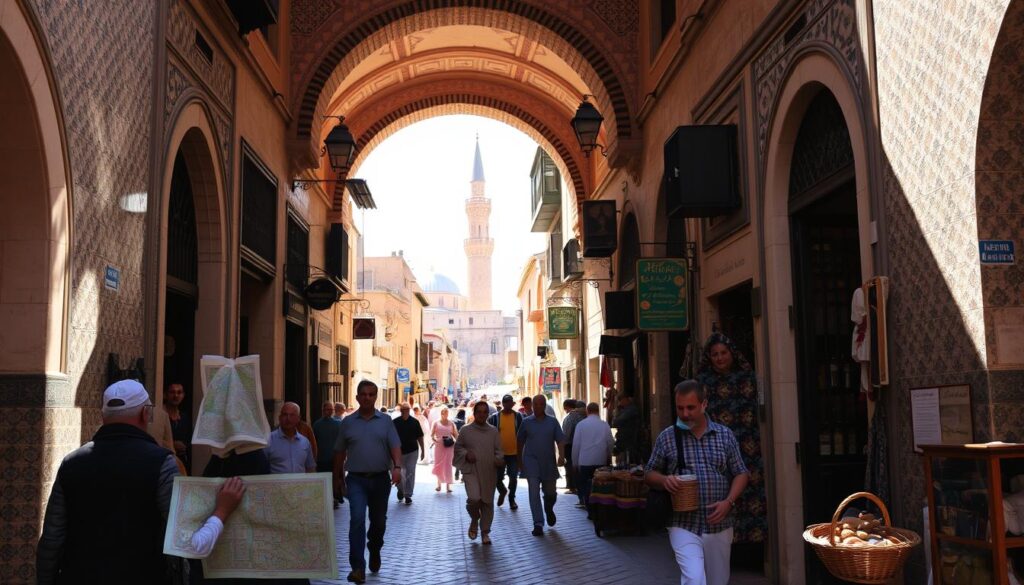
Before you start your fes medina tour, plan carefully. The streets twist and turn in unexpected ways. This can confuse visitors who are new to the area.
Understanding the Street Layout
The medina’s streets follow old patterns that might seem confusing at first. Here are some key things to know:
- Narrow, winding streets often less than 3 meters wide
- Multiple levels and unexpected turns
- Clusters of specialized market areas
- Hidden passages and unexpected courtyards
Tips for Not Getting Lost
To navigate this complex area, use these smart tips:
- Hire a licensed local guide for your first fes medina tour
- Take landmark photos to create your personal map
- Ask shopkeepers or locals for directions
- Carry a physical map with key landmarks
Local Transport Options
| Transport Method | Best For | Cost Range |
|---|---|---|
| Petit Taxi | Reaching medina entrances | $2-$5 USD |
| Guided Walking Tour | In-depth exploration | $20-$50 USD |
| Local Guide | Personalized navigation | $30-$75 USD |
Remember, GPS and mapping apps don’t work well here. A guided fes medina tour is the best way to see this historic place.
What to Do in Fes Morocco: Essential Experiences
Fes is a city full of amazing experiences that take you deep into Moroccan culture. When you explore Fes, you’ll find a place filled with history and attractions you won’t forget.
- Bou Inania Madrasa: A stunning example of Marinid architecture with beautiful tilework and carved cedar details
- Kairaouine Mosque and University: One of the oldest universities in the world, with stunning Islamic architectural design
- Chouara Tanneries: A mesmerizing look into traditional leather-making techniques
Here’s a quick guide to help you plan your visit:
| Attraction | Highlights | Recommended Visit Time |
|---|---|---|
| Bou Inania Madrasa | Stunning Islamic architecture | 1-2 hours |
| Kairaouine Mosque | Historic religious site | 30-45 minutes |
| Chouara Tanneries | Traditional leather production | 1 hour |
Also, explore the Mellah (Jewish Quarter) and the Royal Palace grounds. These places give you a unique look into Fes’s culture and offer great photo spots for those wanting real Moroccan experiences.
Exploring the Famous Tanneries
Fes is known for its rich moroccan cultural experiences. The city’s tanneries are a prime example of living history. The Chouara Tannery is one of the best attractions in Fes. It shows traditional leather production techniques that have stayed the same for centuries.
Chouara Tannery: A Legacy of Craftsmanship
The Chouara Tannery is in the heart of Fes el Bali. It’s the oldest leather tannery in the world. Here, raw animal hides are turned into soft leather using methods passed down through generations.
Best Viewing Points
To see the tanneries at their best, find the right spots. Leather shops have terraces with great views of the dyeing pits. These spots offer a panoramic view of the colorful dyeing process.
- Leather shop terraces offer the best perspectives
- Elevated positions provide unobstructed views of the dyeing process
- Recommended spots include shops around the tannery perimeter
Photography Tips
Getting the perfect shot of the tanneries takes some planning. The scene is full of color and activity. Here are a few tips for capturing it:
- Bring a zoom lens to capture details from a distance
- Use a high shutter speed to freeze the workers’ movements
- Consider morning light for the most dramatic photographs
Pro tip: Bring a small bottle of mint oil or a scarf to help manage the strong odors characteristic of the leather-making process.
The Chouara Tannery is not just a tourist attraction, but a living testament to Fes’s rich artisanal heritage.
Religious and Cultural Landmarks
Fes is a top spot for those wanting to dive into Moroccan culture. The city’s landmarks take you on a journey through Islamic history and show off amazing architecture.
The Kairaouine Mosque and University is a must-see for history buffs. Even though non-Muslims can’t go inside, the outside is breathtaking. It’s the oldest university still in use today, recognized by UNESCO.
- Zaouia of Moulay Idriss II: A sacred shrine honoring the city’s founder
- Bou Jeloud Mosque: An architectural marvel with intricate tile work
- Dar Batha Museum: Showcasing traditional Moroccan arts and crafts
“In Fes, every stone tells a story of cultural richness and spiritual depth.”
Visiting these landmarks lets you see Fes’ deep spiritual heritage. Each place gives a peek into Morocco’s rich religious and cultural world. It’s a chance to learn about the city’s heart.
For a better experience, think about getting a local guide. They can share more about each landmark’s history and significance.
Shopping in the Souks and Markets
Exploring Fes local markets is a journey that shows the heart of Moroccan culture. Your fes shopping guide will take you through a world of traditional crafts and bustling souks. These places have shaped this ancient city for centuries.
The souks of Fes are a unique shopping adventure. These narrow alleys are filled with artisans and merchants. They sell everything from beautiful ceramics to hand-woven textiles.
Traditional Crafts to Discover
- Handmade ceramic pottery with intricate blue and white designs
- Leather goods crafted using centuries-old techniques
- Delicate metalwork and brass lanterns
- Hand-woven Berber rugs and textiles
- Ornate wooden furniture with geometric patterns
Bargaining Tips for Fes Markets
Negotiating prices in Fes local markets is an art. Start by:
- Always be friendly and respectful
- Never accept the first price offered
- Be prepared to walk away
- Learn a few basic Arabic or French phrases
- Show genuine interest in the craftsmanship
Best Markets to Visit
| Market Name | Specialty | Location |
|---|---|---|
| Attarine Souk | Spices and Perfumes | Fes el Bali |
| Henna Souk | Natural Cosmetics | Medina Quarter |
| Taala Kebira | General Goods | Old Medina |
“Shopping in Fes is not just about buying souvenirs—it’s about experiencing a living, breathing tradition of craftsmanship.” – Local Artisan
Your fes shopping guide suggests going early in the morning. Markets are lively, and merchants are ready to start. Bring cash, wear comfy shoes, and get ready for a memorable experience. It’s a chance to connect with Moroccan cultural heritage.
Authentic Moroccan Cuisine and Dining
Explore the rich flavors of moroccan cuisine in fes. This place is a true food lover’s dream. It offers a unique dining experience that’s unlike any other.
Fes is known for its traditional dishes. You’ll get to try some amazing foods. Here are a few must-try dishes:
- Tajine – A slow-cooked stew in a cone-shaped clay pot
- Pastilla – A meat pie that’s both sweet and savory
- Couscous with lamb or chicken
- Fresh mint tea – A classic Moroccan drink
Street food in Fes is a must-try. Walk through the medina and find vendors selling:
- Freshly baked khobz bread
- Grilled merguez sausages
- Harira soup
- Moroccan pastries like chebakia
“In Fes, every meal tells a story of tradition, spice, and cultural heritage.” – Moroccan Food Experts
Join a cooking class or food tour for a deeper experience. You’ll learn about the techniques and cultural importance of moroccan cuisine in fes.
When dining, remember to follow local customs. Use your right hand to eat, accept tea when offered, and enjoy each bite. It’s a way to honor Moroccan culinary traditions.
Where to Stay in Fes
Choosing the right place to stay can make your trip to Fes Morocco unforgettable. The city has many lodging options. You can find everything from luxurious riads to cozy guesthouses.
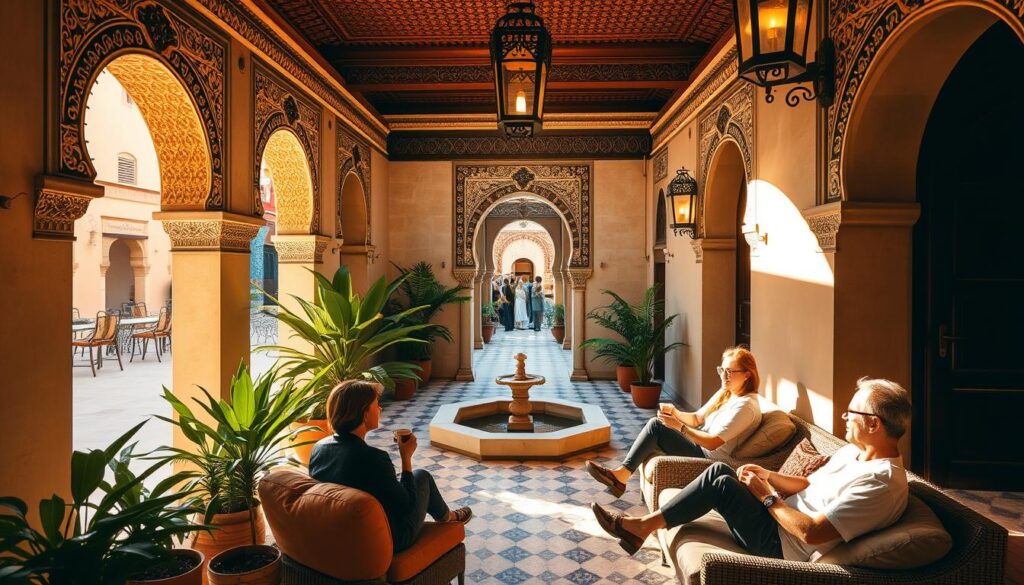
Your stay in Fes Morocco can greatly influence your experience. Staying in the medina lets you dive deep into the city’s culture. It’s a unique way to connect with the local traditions.
Luxury Riads: Opulent Traditional Experiences
Luxury riads give you a special look at Moroccan architecture. These traditional homes are known for:
- Intricate tile work and carved wooden details
- Central courtyards with fountains
- Personalized service and gourmet Moroccan breakfast
- Rooftop terraces with panoramic medina views
Mid-Range Accommodations: Comfort and Value
Mid-range options offer a great mix of comfort and cost. These places usually have:
- Clean, well-maintained rooms
- Friendly local staff
- Convenient medina locations
- Basic amenities and Wi-Fi
Budget Accommodations: Affordable Exploration
Budget travelers can find cozy hostels and guesthouses. These places are perfect for exploring Fes without spending a lot. Look for:
- Shared dormitory rooms
- Community kitchen facilities
- Social atmosphere for meeting other travelers
- Budget-friendly prices
Pro tip: Book your stay in Fes Morocco early, especially during peak seasons. This way, you can get the best deals.
Day Trips from Fes
Fes is a great starting point for exploring Morocco’s varied landscapes and rich culture. Day trips from Fes can turn a simple city visit into an amazing adventure. You’ll see many beautiful places.
Some top day trips from Fes include:
- Volubilis: A UNESCO World Heritage site with impressive Roman ruins
- Chefchaouen: The famous blue city in the Rif Mountains
- Meknes: An imperial city with amazing historical architecture
- Middle Atlas Mountains: Great for nature lovers and wildlife enthusiasts
When planning your day trips, think about how you’ll get there. You can take grand taxis, join organized tours, or rent a car. The Middle Atlas Mountains have stunning cedar forests. You might see rare Barbary macaques there.
History lovers will love Volubilis. It’s just 70 kilometers from Fes. This ancient Roman city has well-preserved mosaics and buildings. It feels like stepping back in time.
Pro tip: Start your day trips early to make the most of your time and avoid the heat.
Chefchaouen is known for its blue buildings. It’s a calm contrast to Fes’s busy medina. This mountain town offers beautiful views, great photo spots, and unique crafts.
Conclusion
Exploring Fes Morocco shows a place that goes beyond usual travel spots. This ancient city is a journey through history, where every street and door has a story. You’ll dive into a world where crafts, architecture, and senses come together.
Fes is more than a place to visit; it’s a life-changing experience. You’ll see the beauty of madrasas and souks, stepping off the beaten path. Its UNESCO World Heritage status shows the amazing culture waiting to be found.
Your trip to Fes will change how you see Moroccan culture. You’ll explore the medina, try local food, and see ancient tanneries. Each step reveals a world that’s both old and full of life. Be curious and open to discover one of Morocco’s most amazing cities.
Seeing Fes as a starting point to Morocco’s culture is key. The memories you make here will stay with you, encouraging you to explore more of this incredible country.

